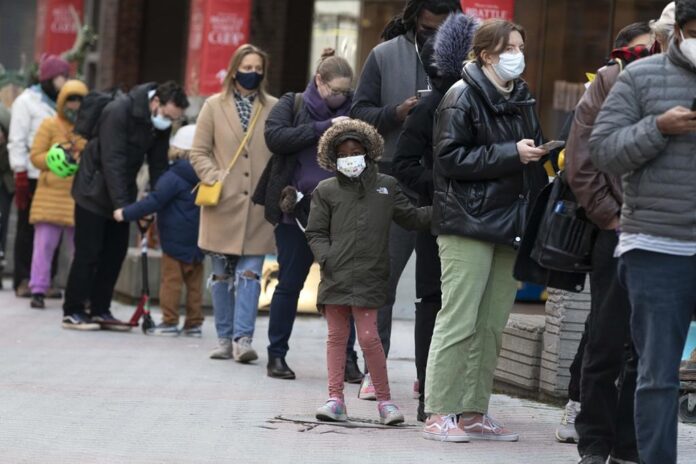Nearly a year after COVID vaccines became freely available in the U.S., one fourth of American adults remain unvaccinated, and a picture of the economic cost of vaccine hesitancy is emerging. It points to financial risk for individuals, companies and publicly funded programs.
Vaccine hesitancy likely already accounts for tens of billions of dollars in preventable U.S. hospitalization costs and up to hundreds of thousands of preventable deaths, say public health experts.
For individuals forgoing vaccination, the risks can include layoffs and ineligibility to collect unemployment, higher insurance premiums, growing out-of-pocket medical costs or loss of academic scholarships.
For employers, vaccine hesitancy can contribute to short-staffed workplaces. For taxpayers, it could mean a financial drain on programs such as Medicare, which provides health care for seniors.
Some employers are looking to pass along a risk premium to unvaccinated workers, not unlike how smokers can be required to pay higher health premiums. One airline said it will charge unvaccinated workers $200 extra a month in insurance.
“When the vaccines emerged it seemed like everyone wanted one and the big question was how long it would take to meet the demand,” said Kosali Simon, a professor of health economics at
Indiana University. “It didn’t occur to me that, a year later, we’d be studying the cost of people not wanting the vaccines.”
Alicia Royce, a 38-year-old special education teacher in Coachella, California, opted out of getting the COVID vaccine or having her two vaccine-eligible children get it. Royce’s parents got the shots, but she has been concerned by issues including reports of adverse reactions.
Trending Stories
Canadian soccer team’s bid for World Cup qualification put on hold in Costa Rica
WHO rejects Medicago’s COVID-19 vaccine due to ties to tobacco giant
The decision puts Royce in a delicate spot. Her school, like others in California, began a vaccine mandate for staff last year. For now, Royce has a religious exemption and gets tested for COVID twice a week before entering the classroom. The situation has prompted her family to plan a move to Alabama, where schools have not imposed mandates, after the school year.
“I’ll get paid less,” said Royce, who expects to take a $40,000-a-year pay cut. “But I’m moving for my own personal freedom to choose.”
U.S. surgeon general explains why Biden is receiving criticism for latest COVID-19 plan, assures measures are ‘strong’ – Dec 5, 2021
As the pandemic enters its third year, the number of U.S. patients hospitalized with COVID is near a 17-month low. Most Americans are vaccinated, and the country is regaining a semblance of normalcy, even as authorities predict a coming uptick in infections from the BA.2 sub-variant.
Yet as millions return to offices, public transportation and other social settings, Centers for Disease Control and Prevention figures show nearly 25% of U.S. adults haven’t been fully vaccinated, and the latest data suggests many holdouts won’t be easily swayed: The number of people seeking a first COVID vaccine in the U.S. has fallen to 14-month lows.
Vaccines have proven to be a powerful tool against the virus. CDC figures from 2021’s Delta wave found that unvaccinated Americans had four times greater risk of being infected, and nearly 13 times higher risk of death from COVID.
The disparities were even greater for those who received booster shots, who were 53 times less likely to die from COVID. Less than half of the country’s vaccinated population has so far received a booster.
© 2022 Reuters



